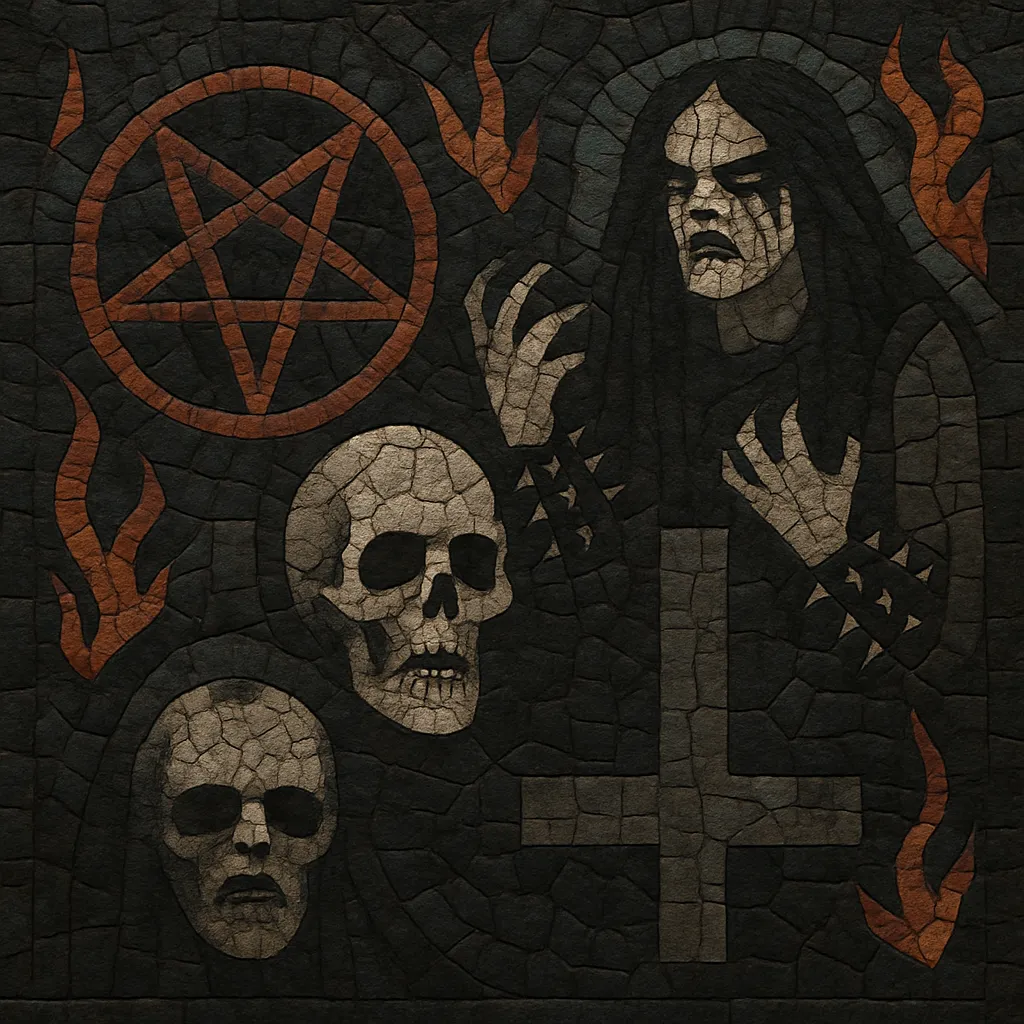Black metal is a form of extreme metal defined by fast tempos, tremolo‑picked guitar lines, blast‑beat drumming, shrieked or rasped vocals, and a deliberately raw, icy production aesthetic.
Harmonically, it favors minor and modal collections (especially Aeolian and Phrygian), open-string drones, parallel fifths and fourths, tritones, and sparse or suspended chord voicings over blues-derived harmony. Arrangements often employ layered guitars, long-form song structures, and enveloping reverb to create a bleak, otherworldly atmosphere.
The genre’s visual and thematic language is equally distinctive: corpse paint, monochrome artwork, and lyrics exploring anti-dogma, nature, pagan myth, cosmic nihilism, and misanthropy. While some scenes have been associated with controversy and extremism, the musical identity centers on sound, atmosphere, and aesthetics rather than any single ideology.
The term “black metal” was popularized by Venom’s 1982 album Black Metal, whose speed-driven, occult-tinged approach influenced a cluster of bands that formed the style’s first wave. Sweden’s Bathory refined the sound with colder production, tremolo-picked riffs, and a stark, pagan atmosphere, particularly on albums like Under the Sign of the Black Mark. Switzerland’s Hellhammer/Celtic Frost and Denmark’s Mercyful Fate also contributed, mixing thrash, speed, and proto-extreme metal with darker themes and more abrasive timbres.
In the early 1990s, Norwegian bands such as Mayhem, Darkthrone, Burzum, Emperor, Immortal, and Gorgoroth codified the genre’s core traits: shrieked vocals, relentless blast beats, tremolo riffing in minor/modal tonalities, and intentionally raw, lo-fi production. A stark rejection of mainstream polish and death metal’s technical tropes defined the aesthetic. The scene drew intense media attention—both for its groundbreaking music and for criminal incidents (including church arsons and a notorious murder)—which, while not representative of all artists, indelibly shaped public perception.
As the sound traveled, regional scenes flourished. Sweden (e.g., Marduk, Dissection) emphasized speed or melody; symphonic black metal (e.g., Emperor, later Dimmu Borgir) added orchestration and keyboards; atmospheric strains (e.g., early Burzum, Ulver) explored ambiance and folk elements; bestial/war metal took a more chaotic, noise-suffused path; depressive/suicidal black metal (DSBM) foregrounded bleak, hypnotic minimalism; and blackgaze fused black metal textures with shoegaze’s lush harmonies.
From the 2010s onward, black metal became a global, highly modular language—interfacing with post-rock, folk traditions, avant-garde composition, and electronic sound design. Production ranges from intentionally primitive to high-fidelity. Festivals, labels, and online communities have sustained an international ecosystem, while many artists explicitly distance the music from extremist politics, emphasizing atmosphere, craft, and artistic autonomy.


